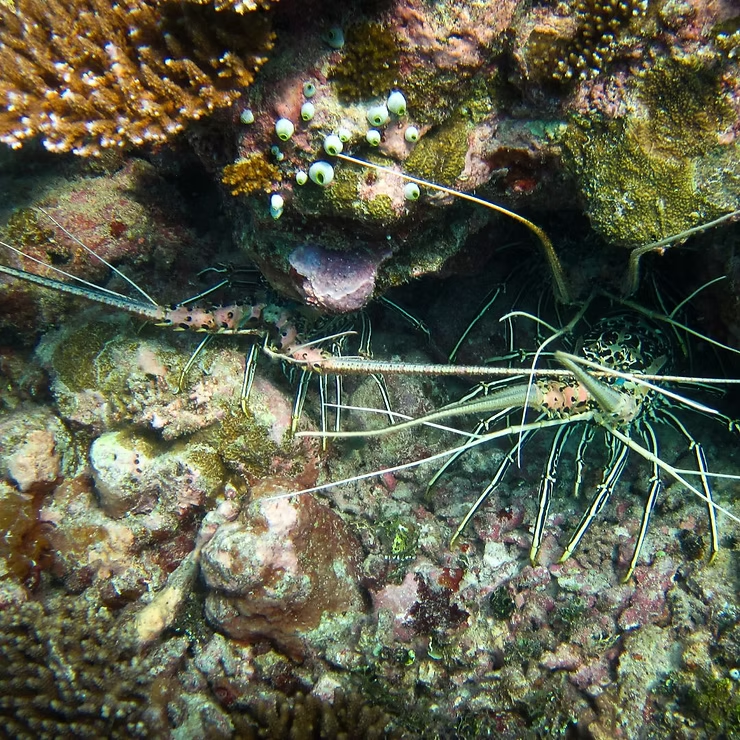Introduction
Crustaceans are among the most diverse and fascinating invertebrates on Earth. From the delicate shrimp to the powerful lobster, they occupy nearly every aquatic habitat and hold immense ecological, scientific, and cultural significance. Beyond their roles as seafood delicacies, crustaceans serve as key contributors to biodiversity and as model organisms in biological research. Understanding their diversity, morphology, and evolutionary history offers crucial insights into the resilience of life and the need for conservation.
The Amazing World of Crustaceans
Understanding Crustacean Diversity
Crustaceans thrive in habitats ranging from ocean trenches to freshwater streams. Their remarkable adaptability is reflected in:
- Body Shapes: Streamlined shrimp, armored lobsters, and countless intermediate forms.
- Habitats: Burrowing in sand, clinging to coral, or swimming in open waters.
- Adaptations: Specialized claws, advanced gills, and camouflage techniques.
This adaptability not only fascinates scientists but also demonstrates the evolutionary success of crustaceans across diverse ecosystems.
Crustaceans in Different Ecosystems
From coral reefs where shrimp act as cleaners, to freshwater streams where crayfish dig burrows, crustaceans shape their environments. Fiddler crabs communicate with oversized claws in brackish waters, while bioluminescent krill sustain deep-sea predators. Each ecological role underscores their importance in maintaining balance across ecosystems.
Crustaceans in Biology Research
Contributions to Science
Crustaceans are valuable research organisms in fields including neurobiology, developmental biology, and evolutionary ecology. Their contributions include:
- Providing insight into sensory processing and neural behavior.
- Helping unravel developmental processes of body structures.
- Serving as models for studying adaptation and ecological resilience.
Their role in research extends beyond academia, influencing conservation strategies and resource management worldwide.
Morphology Marvels
Decoding Body Structures
Crustaceans possess armored exoskeletons, jointed appendages, and specialized gills. These features enable protection, locomotion, sensory perception, and survival. Examples include the sideways scuttling of crabs, the gill adaptations of shrimp, and the powerful claws of lobsters.
Adaptations Across Species
From camouflage to mimicry, crustaceans exhibit ingenious survival strategies. Some develop tough shells against predators, while others evolve limbs for digging, climbing, or hunting. Their functional morphology is a key driver of their evolutionary success.
Crustacean Classification and Evolution
The Evolutionary Tree
Crustaceans belong to the arthropod phylum alongside insects and arachnids. Their evolutionary story features adaptive radiations, fossil evidence of extinct forms, and molecular studies that continue to reshape our understanding of their relationships.
Taxonomic Groups
Within Arthropoda, crustaceans are divided into classes like Malacostraca (crabs, lobsters, shrimp). Taxonomic keys guide researchers through their immense diversity, while molecular techniques refine their classification.
Crustaceans as Model Organisms
In Neurobiology and Development
Over 150 years of research has explored crustacean nervous systems, revealing insights into sensory processing, neuromodulation, and learning. Their simple yet powerful neural networks continue to inform breakthroughs in neuroscience.
In Evolutionary Ecology
Crustaceans are essential for studying adaptation and diversification. Their morphologies illuminate evolutionary pressures, while their ecological interactions provide a living laboratory for exploring resilience in changing environments.
Behavior and Ecology
Daily Routines and Interactions
Some crustaceans are active foragers, others filter feeders, and many are both predator and prey. They regulate algae, support marine food webs, and contribute to nutrient cycling, underscoring their ecological importance.
Habitats and Conservation
From mangroves and coral reefs to freshwater streams, crustaceans inhabit ecosystems under increasing threat from overfishing, pollution, and climate change. Protecting their habitats ensures the survival of countless species and the services they provide.
Crustaceans and Cuisine
Popular Edible Species
Shrimp, crabs, and lobsters dominate global cuisine, prepared in dishes from casual seafood boils to fine dining. Lesser-known options such as crayfish and langoustines also enrich culinary traditions.
Sustainable Practices
Balancing demand with ecological responsibility, sustainable fishing and aquaculture reduce pressure on wild populations. Marine protected areas, responsible harvesting, and community awareness form pillars of crustacean conservation.
The Fossil Record
Ancient Crustaceans
Fossils trace crustacean ancestry across hundreds of millions of years, showcasing adaptations in body forms and behaviors. These records deepen understanding of how modern species evolved.
Significant Discoveries
Paleontological finds illuminate evolutionary relationships and marine ecosystems of the past, reshaping crustacean taxonomy and offering clues for conservation today.
Conservation and the Future
Threats to Populations
Crustaceans face mounting pressures from climate change, altered ocean currents, habitat destruction, and unsustainable fishing. Some species are at risk of extinction without targeted action.
Conservation Efforts
Success stories highlight the power of marine protected areas, sustainable management, and pollution reduction. Public awareness and education remain vital to inspiring global responsibility for crustacean survival.
Conclusion
Crustaceans are more than seafood—they are ecological engineers, evolutionary marvels, and scientific allies. Protecting their diversity safeguards not only marine biodiversity but also the intricate balance of life on Earth. By valuing both their natural and cultural significance, humanity can ensure that these extraordinary creatures continue to thrive for generations to come.

